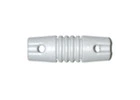Block cleaning london
Check with seller
Free
Services
Selecting the appropriate packaging material is crucial for any product, especially in industries where presentation, durability, and sustainability are paramount. PET (Polyethylene Terephthalate) is a popular choice due to its versatility, transparency, and recyclability. However, finding the right PET for your specific product requires careful consideration of various factors. Here's a comprehensive guide to help you navigate through the process effectively.
Understanding Your Product:
Before delving into PET selection, thoroughly understand your product's characteristics. Consider its size, shape, weight, fragility, shelf life, and sensitivity to environmental factors like light, moisture, and temperature. This understanding will influence your choice of PET, ensuring it provides adequate protection and preserves product integrity.
Identifying Regulatory Requirements:
Different products are subject to various regulations concerning packaging materials. Ensure compliance with regulations related to food contact, recyclability, chemical resistance, and other relevant standards. Understanding these requirements will narrow down your options and guide you toward PET solutions that meet legal and safety standards.
Assessing PET Variants:
PET comes in various forms, each offering distinct properties suited for different applications. Evaluate options such as PETE (Polyethylene Terephthalate), PETG (Glycol-Modified Polyethylene Terephthalate), and CPET (Crystallized Polyethylene Terephthalate) based on factors like clarity, barrier properties, heat resistance, and compatibility with recycling processes. Select the variant that aligns best with your product's needs.
Considering Sustainability:
In today's environmentally conscious landscape, sustainability is a significant consideration in packaging decisions. Opt for PET options that are recyclable and contribute to a circular economy. Explore post-consumer recycled (PCR) PET or bio-based PET alternatives to reduce environmental impact while maintaining packaging performance.
Assessing Barrier Properties:
PET's barrier properties play a crucial role in preserving product freshness and quality. Evaluate the level of protection required against oxygen, moisture, UV light, and other potential contaminants based on your product's sensitivity. Select PET formulations with appropriate barrier enhancements to extend shelf life and maintain product integrity.
Reviewing Manufacturing Processes:
Consider the manufacturing processes involved in producing PET packaging. Assess factors like compatibility with blow molding, thermoforming, or injection molding techniques based on your production requirements. Choose PET materials that facilitate efficient processing while maintaining structural integrity and consistency.
Testing for Compatibility:
Before finalizing your PET selection, conduct compatibility testing to ensure it's suitable for your product. Evaluate factors like chemical resistance, interaction with product ingredients, and potential migration of contaminants. Conduct thorough testing to mitigate risks and safeguard product quality and consumer safety.
Assessing Aesthetic Requirements:
Packaging aesthetics can significantly impact consumer perception and brand image. Evaluate PET options based on clarity, gloss, surface finish, and printing capabilities to ensure your product stands out on the shelf and communicates brand values effectively. Balance aesthetic appeal with functional requirements to achieve an optimal packaging solution.
Considering Cost Considerations:
Evaluate the cost implications associated with different PET options, including material expenses, production costs, and sustainability investments. Consider long-term benefits such as reduced environmental impact and enhanced brand reputation alongside upfront expenses. Choose a PET solution that aligns with your budgetary constraints while delivering value across the product lifecycle.
Conclusion:
Finding the right PET for your specific product requires a comprehensive assessment of various factors, including product characteristics, regulatory requirements, sustainability considerations, barrier properties, manufacturing processes, compatibility testing, aesthetic requirements, and cost considerations. By carefully evaluating these factors and selecting the most suitable PET solution, you can ensure optimal packaging performance, product protection, and consumer satisfaction while aligning with your brand values and sustainability goals.
https://petrefine.com/
Published date:
February 29, 2024
Modified date:
February 29, 2024
Region:
Alabama
City area:
New York
Address:
New York
Views
67






Useful information
User
Tel.: 9211420845
Contact publisher


Block cleaning london
Check with seller


Emergency Pull Cords...
Check with seller


Monetize your data b...
Check with seller


Porcelain insulator ...
Free
